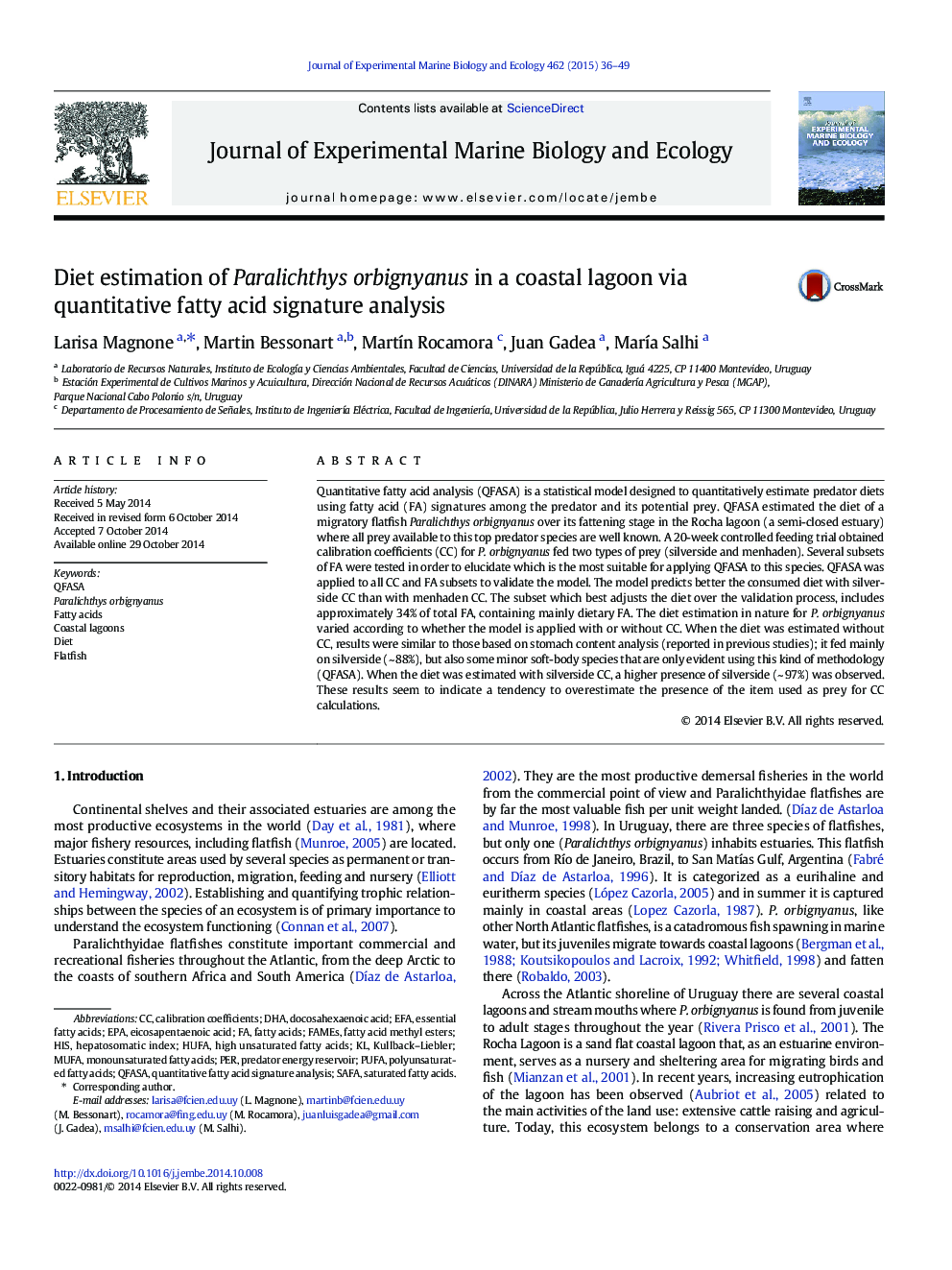| کد مقاله | کد نشریه | سال انتشار | مقاله انگلیسی | نسخه تمام متن |
|---|---|---|---|---|
| 4395437 | 1618413 | 2015 | 14 صفحه PDF | دانلود رایگان |

• Muscle with skin resulted in the active reservoir of energy in Paralichthys orbignyanus.
• The subset of FA which best performed in the diet estimation only comprises 34% of total FA.
• Calibration coefficients introduced bias in the results of the diet estimation.
• QFASA was applied to estimate the diet of a flatfish population in nature.
Quantitative fatty acid analysis (QFASA) is a statistical model designed to quantitatively estimate predator diets using fatty acid (FA) signatures among the predator and its potential prey. QFASA estimated the diet of a migratory flatfish Paralichthys orbignyanus over its fattening stage in the Rocha lagoon (a semi-closed estuary) where all prey available to this top predator species are well known. A 20-week controlled feeding trial obtained calibration coefficients (CC) for P. orbignyanus fed two types of prey (silverside and menhaden). Several subsets of FA were tested in order to elucidate which is the most suitable for applying QFASA to this species. QFASA was applied to all CC and FA subsets to validate the model. The model predicts better the consumed diet with silverside CC than with menhaden CC. The subset which best adjusts the diet over the validation process, includes approximately 34% of total FA, containing mainly dietary FA. The diet estimation in nature for P. orbignyanus varied according to whether the model is applied with or without CC. When the diet was estimated without CC, results were similar to those based on stomach content analysis (reported in previous studies); it fed mainly on silverside (~ 88%), but also some minor soft-body species that are only evident using this kind of methodology (QFASA). When the diet was estimated with silverside CC, a higher presence of silverside (~ 97%) was observed. These results seem to indicate a tendency to overestimate the presence of the item used as prey for CC calculations.
Journal: Journal of Experimental Marine Biology and Ecology - Volume 462, January 2015, Pages 36–49